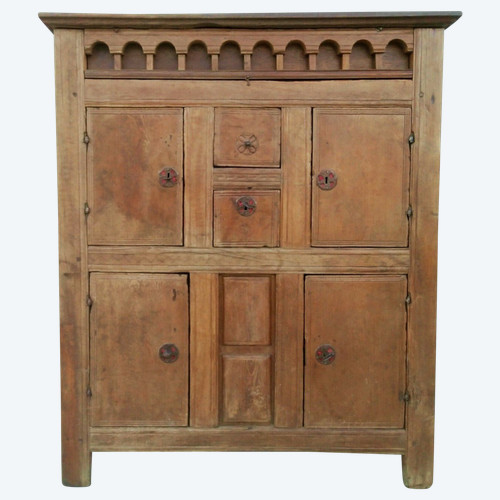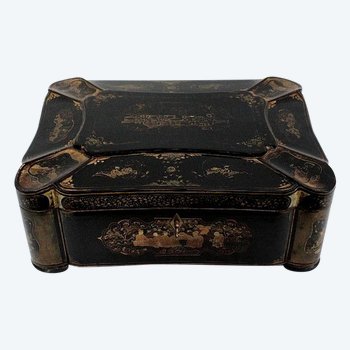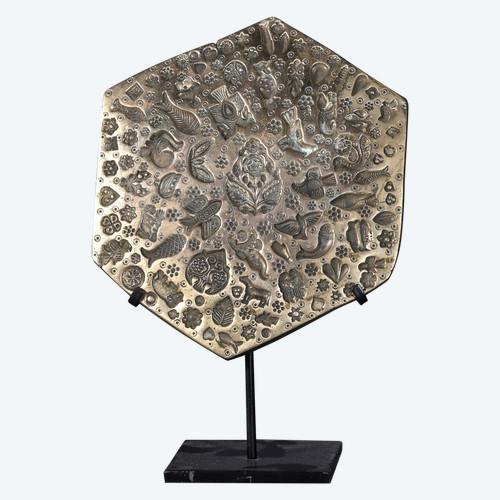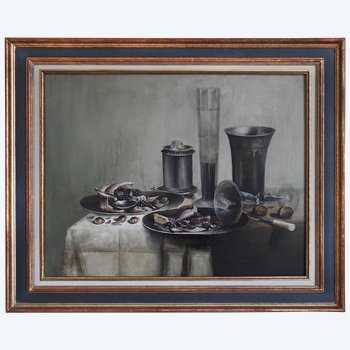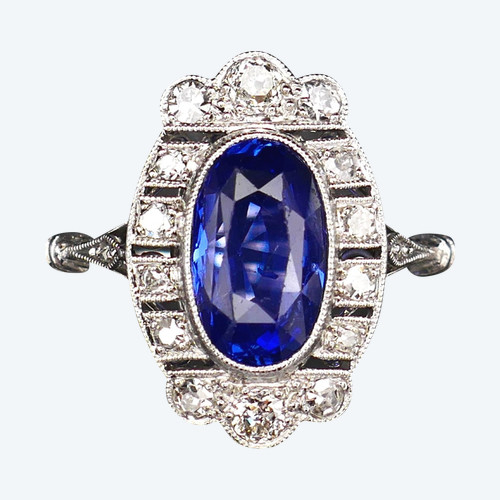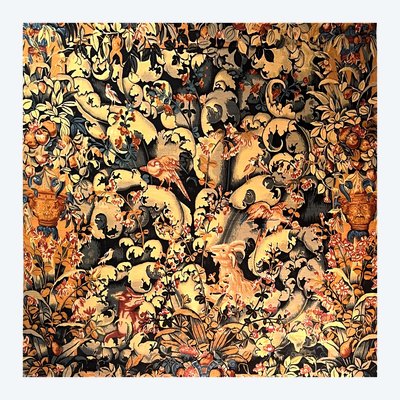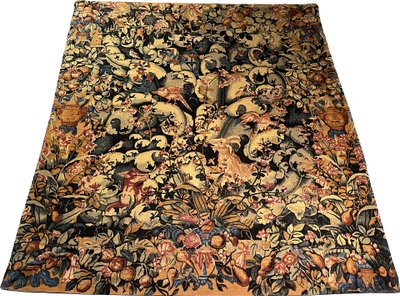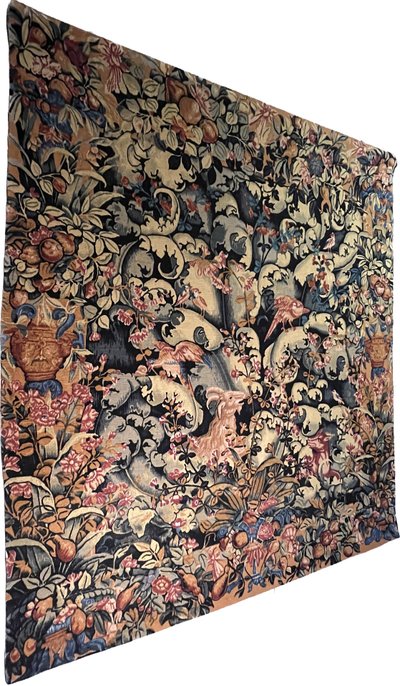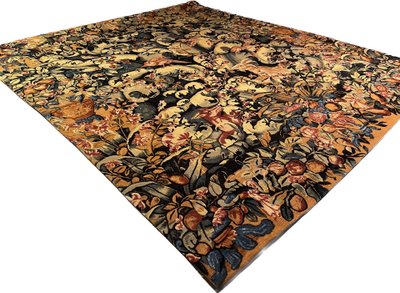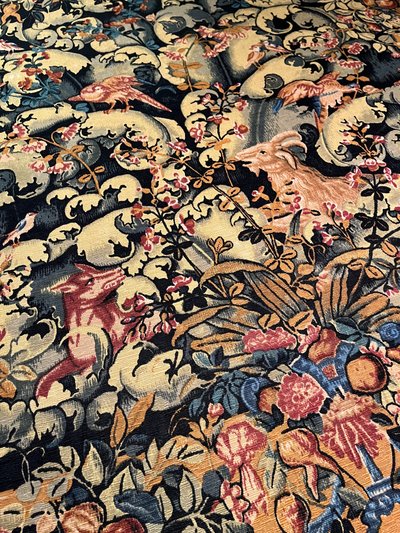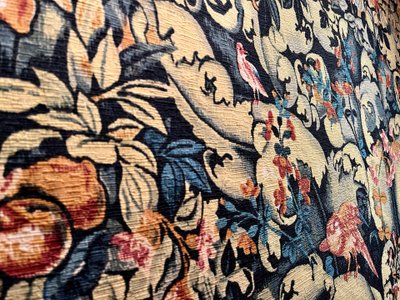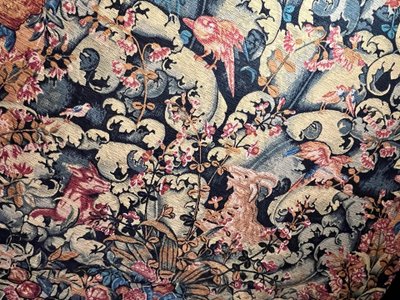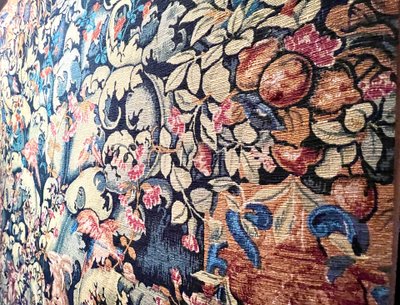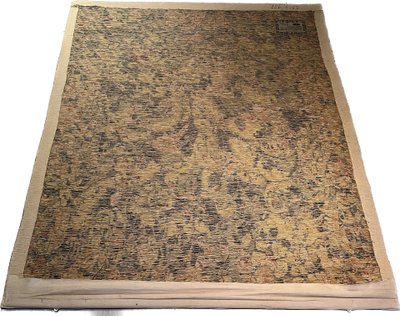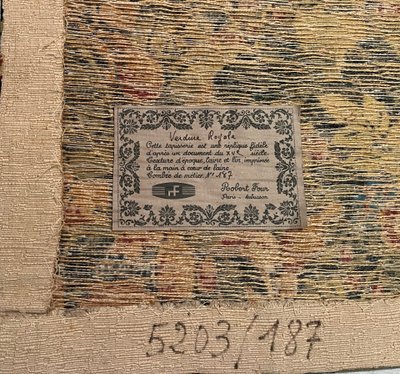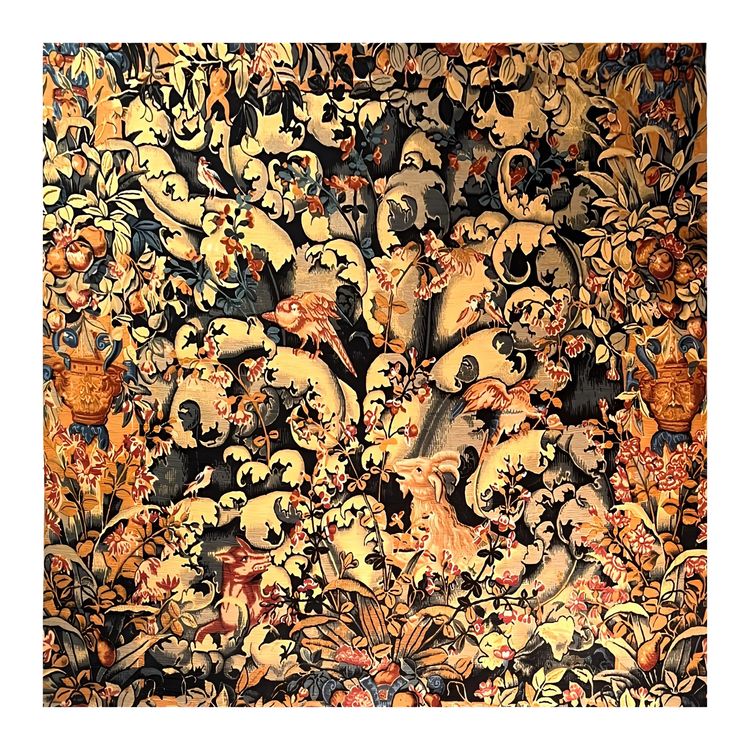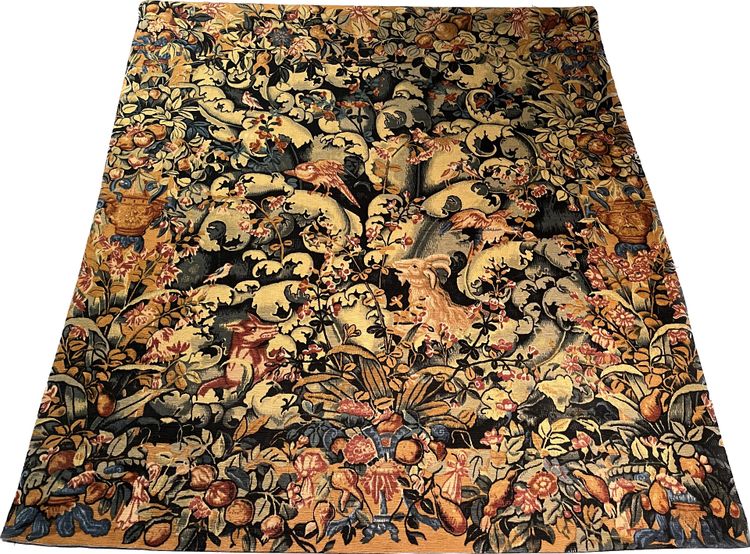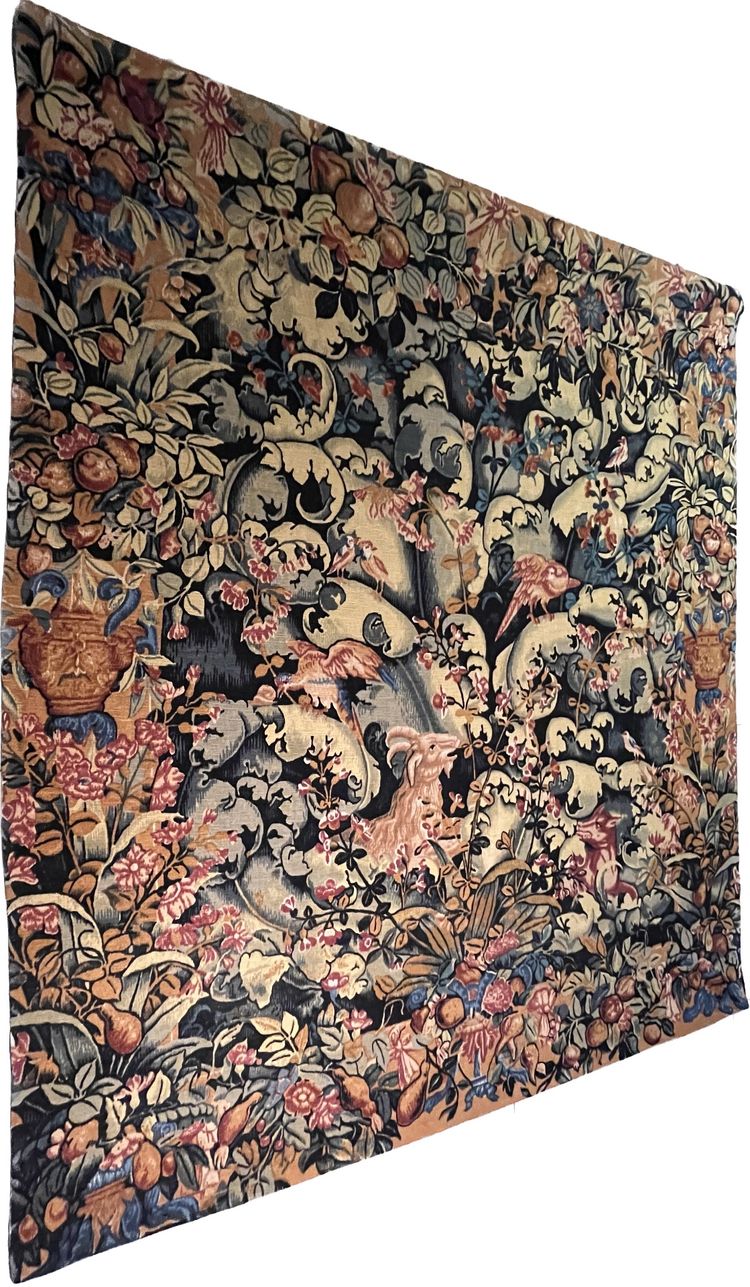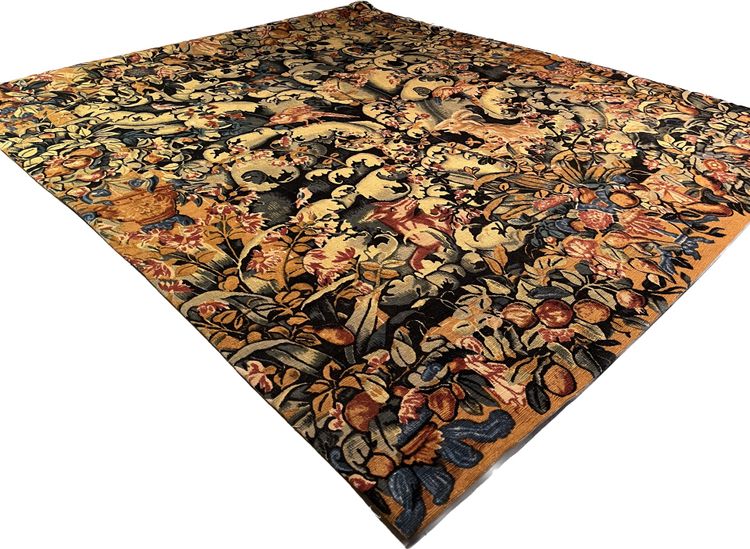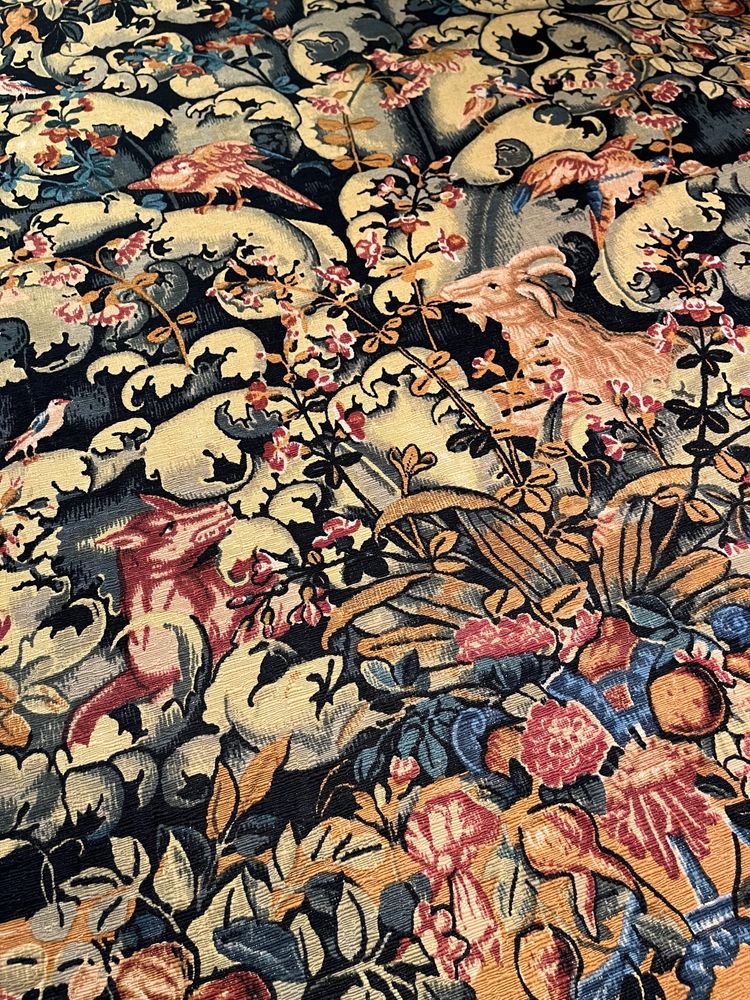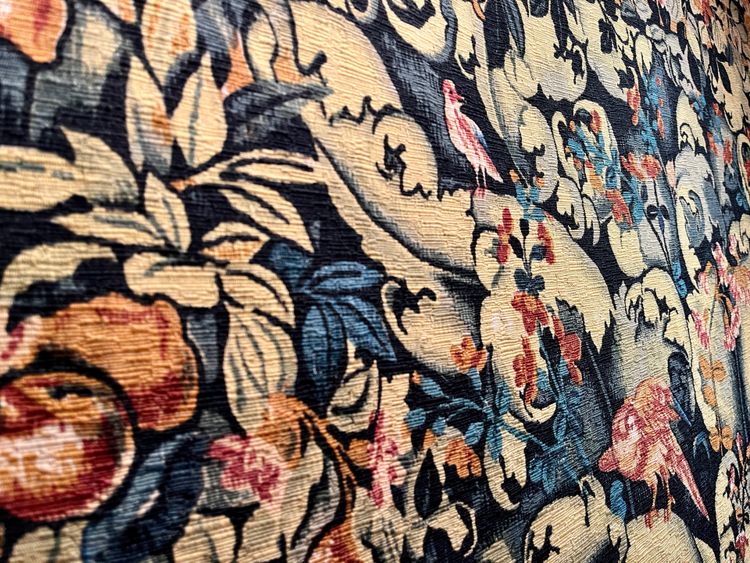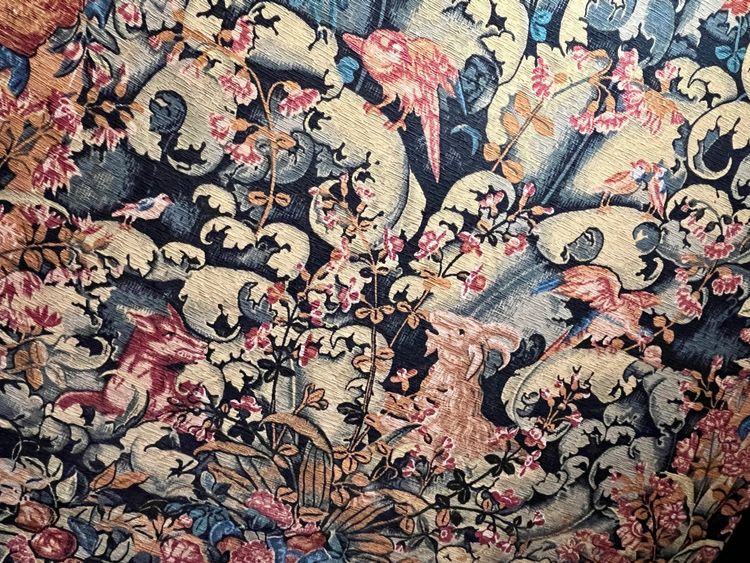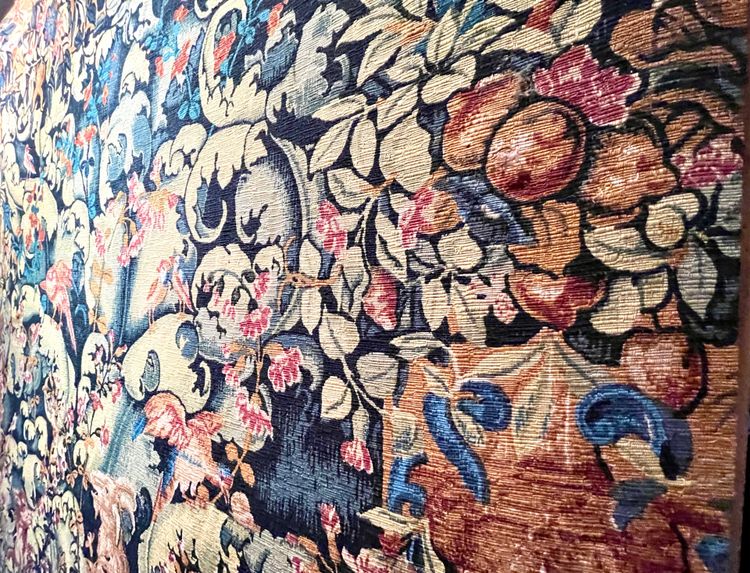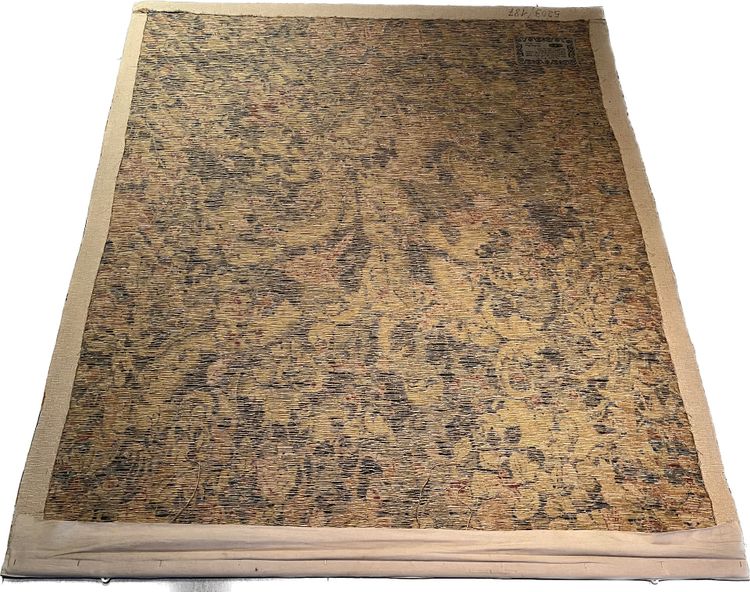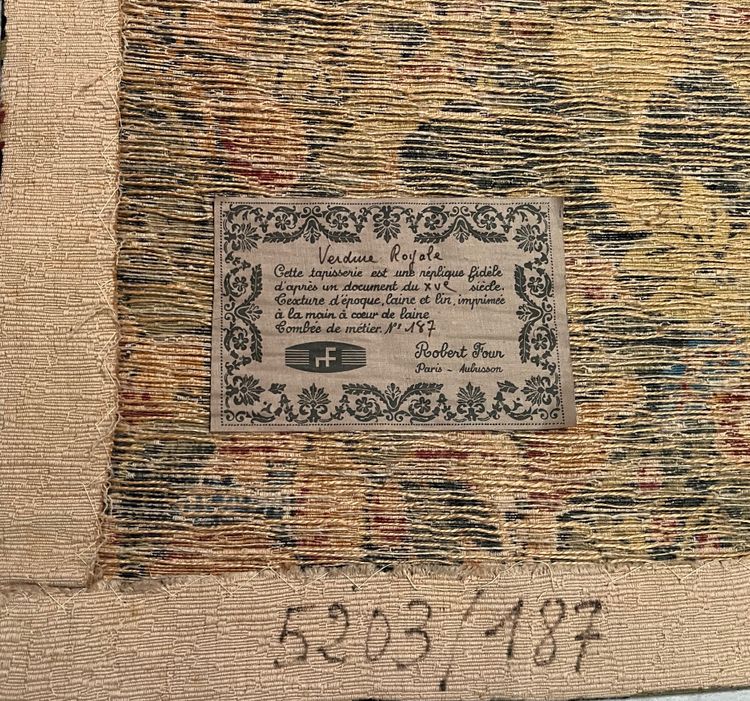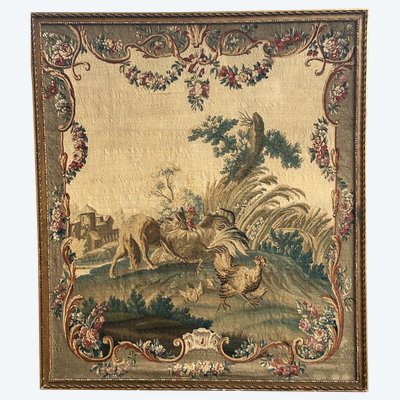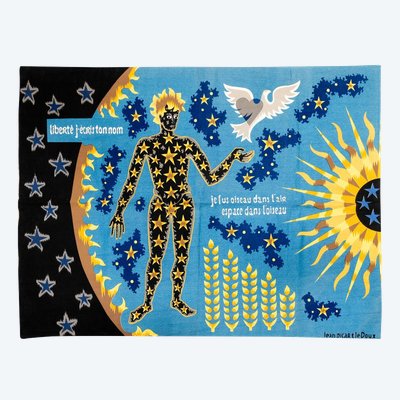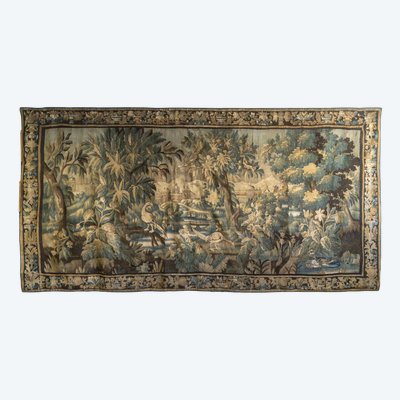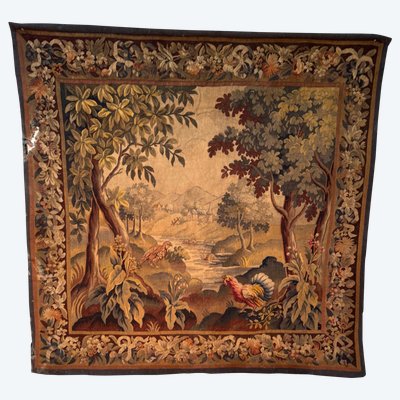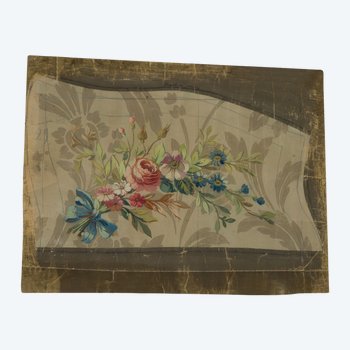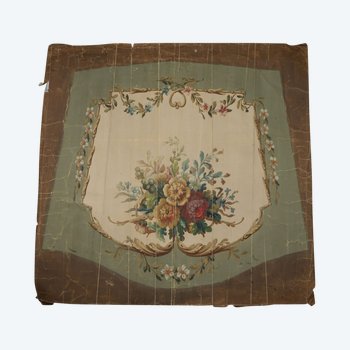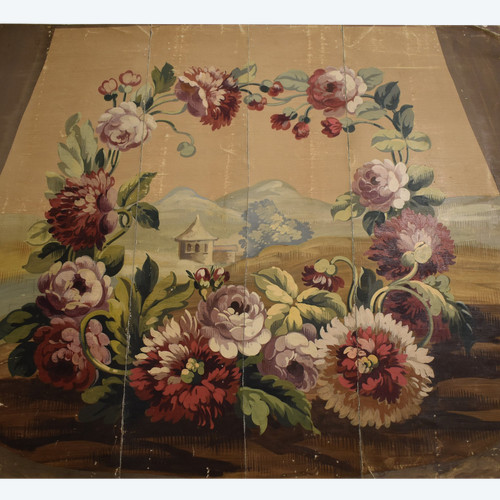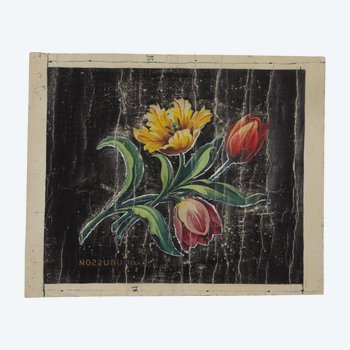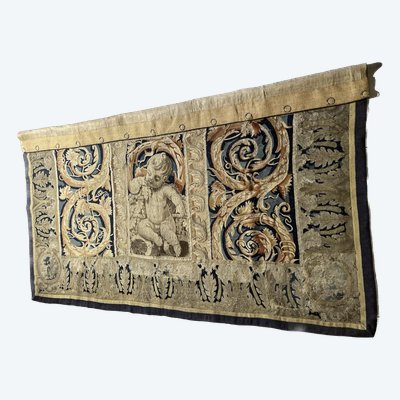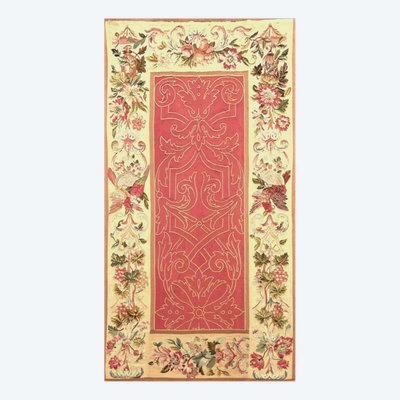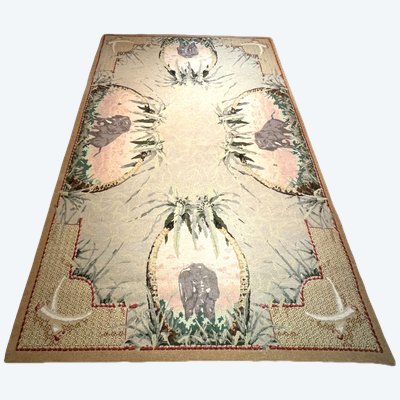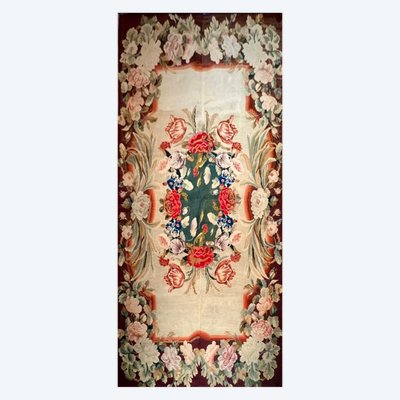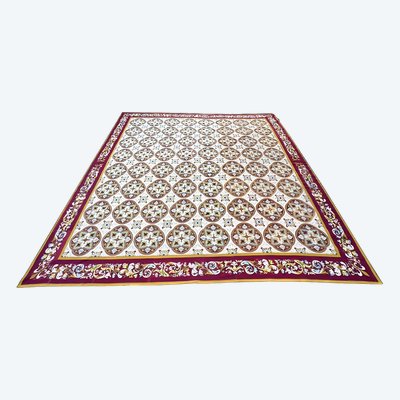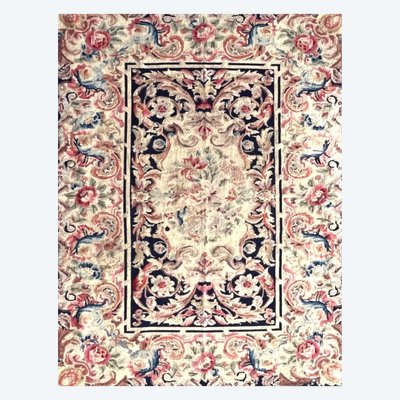This description has been translated and may not be completely accurate. Click here to see the original
Cabbage Leaf Tapestry - Canvas Print - Robert Four - Aubusson.
ROBERT FOUR - AUBUSSON
Printed wool and linen tapestry decorated with birthwort leaves and animals, a replica of a 15th-century document.
Titled "Verdure royale" and numbered 187 on the ribbon. Circa 1900.
So-called Aristoloche Tapestry from the Ateliers de la Marche - Early 16th century.
These tapestries are known as cabbage leaves or aristoloche leaves, although the name cabbage leaf is inaccurate as they actually refer to acanthus leaves. This Mediterranean plant has inspired many designs, and it is this plant that gives the tapestry an esoteric effect. Nature is wild, dreamlike, even inhospitable. Jacqueline Boccara also speaks of a "magical forest." The viewer is invited to enter an unknown, lush, and mysterious world.
The tapestry of broad-leaved greenery introduced a three-dimensional but also naturalistic aspect. This aspect is reinforced by the introduction of birds and mythological animals, and very rarely, human figures.
The predominant vision is that of an untamed nature, undisturbed by man. An image that is both fascinating and dreamlike, and undoubtedly emblematic of the Garden of Eden.
The Greenery Tapestry was highly prized in the 16th century. The greenery was woven in numerous workshops in Flanders, as well as in the town of Oudenaarde in Belgium and Aubusson in France.
Robert Four Factory
Today, the Robert Four Factory stands as the flagship of Aubusson craftsmanship and offers its clients—artists and patrons (architects, gallery owners, museums, etc.)—a unique opportunity in France to access all the crucial stages of creating a woven work of art in one place.
When its founder, Robert Four, took over the Simone André workshop in 1952, he quickly elevated it to the status of a full-fledged factory, with its own dyeing workshop, design workshop, weaving and hand-knotting workshops (known as Savonneries), and restoration workshop. He later added techniques such as hand-tufting to the range of expertise offered by the factory. This technique gives the rugs exceptional quality and is inspired by the Savonnerie rugs.
In 1957, Robert Four opened a gallery in the Saint-Germain-des-Prés region of Paris, exhibiting the Manufacture's products, as well as period rugs and tapestries. The Galerie Robert Four is well-known among professionals and individuals, and was also a must-see for tourists visiting Paris.
Today, Robert's son, Pierre-Olivier, who took over the Manufacture from his father in 1996, continues the family's commitment and remains attentive to the trends of the new art scene. He contributes to the revival of this precious and rare art of tapestry and rug making, thus ensuring its place in the history of modern and decorative art.
Dimensions: 154 x 137 cm
Condition: Very good condition. A wooden bar is inserted into the lining at the back of the tapestry for hanging.
Ref: N5IUZ9BJPF
 Louis XIV oak sacristy cabinet sideboard
1.300 € EUR
Louis XIV oak sacristy cabinet sideboard
1.300 € EUR

